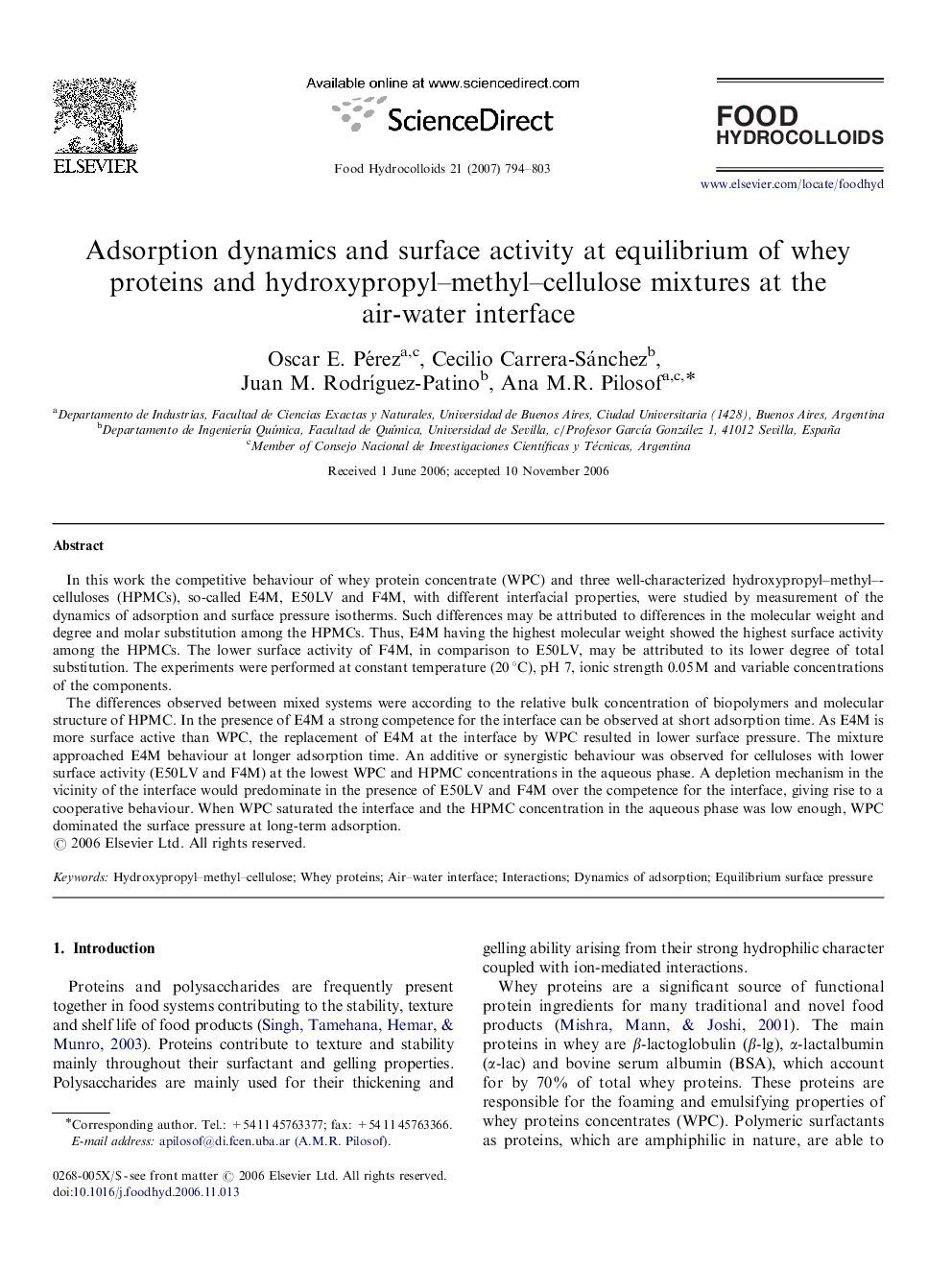| Article ID | Journal | Published Year | Pages | File Type |
|---|---|---|---|---|
| 605939 | Food Hydrocolloids | 2007 | 10 Pages |
In this work the competitive behaviour of whey protein concentrate (WPC) and three well-characterized hydroxypropyl–methyl–celluloses (HPMCs), so-called E4M, E50LV and F4M, with different interfacial properties, were studied by measurement of the dynamics of adsorption and surface pressure isotherms. Such differences may be attributed to differences in the molecular weight and degree and molar substitution among the HPMCs. Thus, E4M having the highest molecular weight showed the highest surface activity among the HPMCs. The lower surface activity of F4M, in comparison to E50LV, may be attributed to its lower degree of total substitution. The experiments were performed at constant temperature (20 °C), pH 7, ionic strength 0.05 M and variable concentrations of the components.The differences observed between mixed systems were according to the relative bulk concentration of biopolymers and molecular structure of HPMC. In the presence of E4M a strong competence for the interface can be observed at short adsorption time. As E4M is more surface active than WPC, the replacement of E4M at the interface by WPC resulted in lower surface pressure. The mixture approached E4M behaviour at longer adsorption time. An additive or synergistic behaviour was observed for celluloses with lower surface activity (E50LV and F4M) at the lowest WPC and HPMC concentrations in the aqueous phase. A depletion mechanism in the vicinity of the interface would predominate in the presence of E50LV and F4M over the competence for the interface, giving rise to a cooperative behaviour. When WPC saturated the interface and the HPMC concentration in the aqueous phase was low enough, WPC dominated the surface pressure at long-term adsorption.
